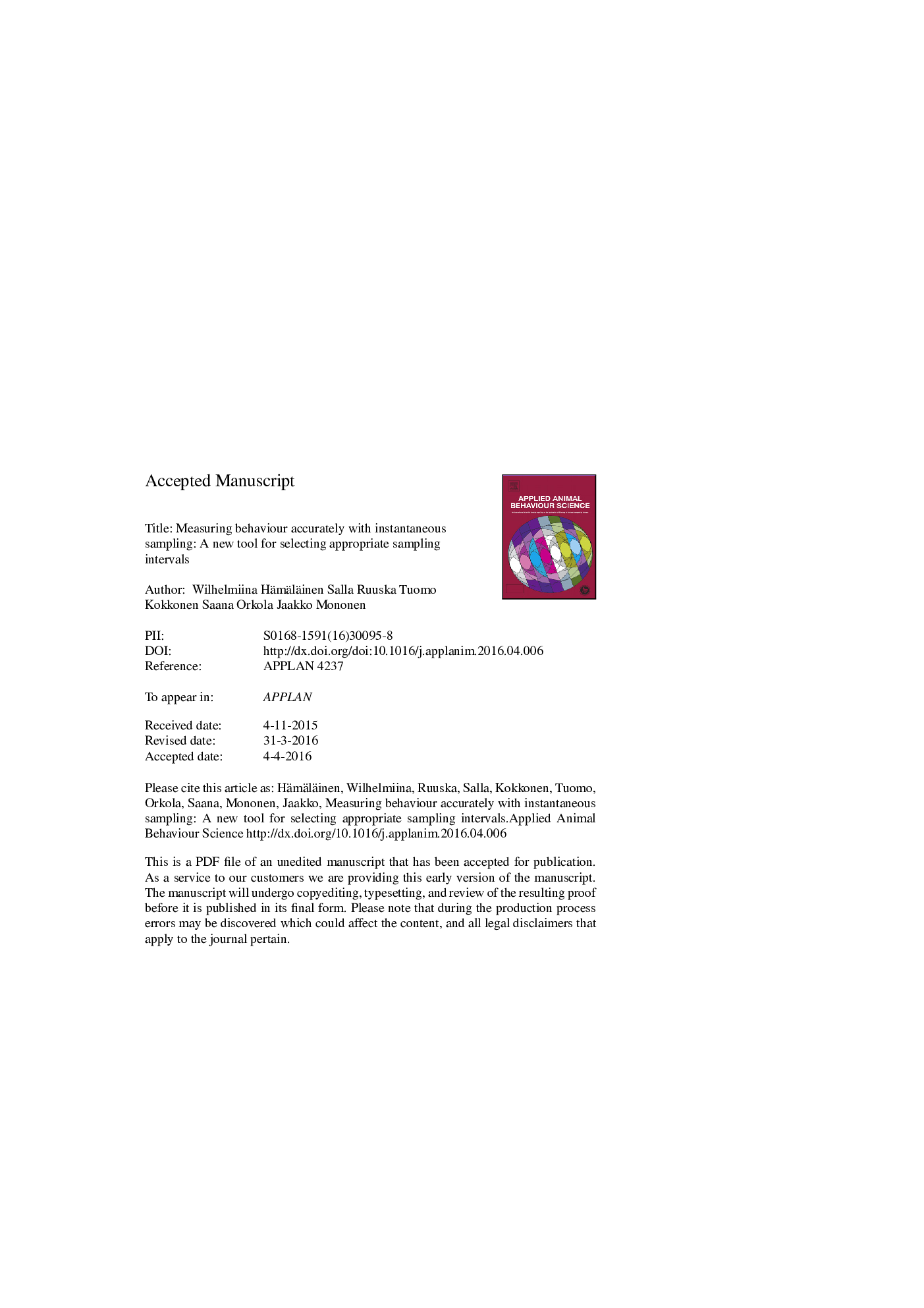| کد مقاله | کد نشریه | سال انتشار | مقاله انگلیسی | نسخه تمام متن |
|---|---|---|---|---|
| 6379275 | 1625326 | 2016 | 28 صفحه PDF | دانلود رایگان |
عنوان انگلیسی مقاله ISI
Measuring behaviour accurately with instantaneous sampling: A new tool for selecting appropriate sampling intervals
ترجمه فارسی عنوان
رفتار اندازه گیری دقیق با نمونه گیری لحظه ای: یک ابزار جدید برای انتخاب فواصل نمونه گیری مناسب
دانلود مقاله + سفارش ترجمه
دانلود مقاله ISI انگلیسی
رایگان برای ایرانیان
کلمات کلیدی
نمونه برداری لحظهای، شبیه سازی رایانهای، دقت، رفتار - اخلاق، گاو شیری،
موضوعات مرتبط
علوم زیستی و بیوفناوری
علوم کشاورزی و بیولوژیک
علوم دامی و جانورشناسی
چکیده انگلیسی
A central dilemma in instantaneous sampling (IS) is to select appropriate sampling intervals for different behaviours. Ideally, the interval should be as long as possible without risking the accuracy of obtained estimates. In this study, we developed a computational method for evaluating the accuracy of IS estimates for behaviour durations and for selecting optimal interval lengths. The method was used to test different IS protocols in the analysis of the behaviour of dairy cows in tie-stalls. The data consisted of 29 days of continuous recordings (CR) from 16 dairy cows. Random error with sampling interval lengths of 0.5, 1, 2, â¦, 29 min and 30, 40, â¦, 120 min were estimated from the CR data for eating, ruminating, drinking, standing, and lying durations. For this purpose, each IS simulation was repeated starting from all possible seconds of the day. The difference between the real and estimated durations was characterised by five indices: The average error magnitude (AEM ± SD) estimated the expected error magnitude from a random starting point with the given IS interval. The error magnitude range (EMR), expressed as minimum - maximum errors, described the best and the worst scenarios for sampling. The probability of the error magnitude exceeding 10% (PEM10) and the upper bound of the error magnitude with probability 90% (EMP90) described the error magnitude distribution, i.e., the chance of getting an appreciable error and the likely maximum error, respectively. Generally, the errors increased with the interval length and short-term behaviours produced the largest errors. As an example, AEMs and EMRs (in parentheses) for the commonly used IS-10 min were: eating 10.1% (0.0-57.0%), ruminating 3.3% (0.0-22.1%), drinking 68.9% (0.2-620.4%), standing 2.2% (0.0-19.9%), and lying 2.0% (0.0-13.4%). The most surprising finding was the dramatic effect of the starting point. Therefore, suitable interval lengths cannot be determined from individual simulations. As a solution, we suggest that researchers analyse their own pilot data with the introduced program using appropriate error bounds and confidence probabilities.
ناشر
Database: Elsevier - ScienceDirect (ساینس دایرکت)
Journal: Applied Animal Behaviour Science - Volume 180, July 2016, Pages 166-173
Journal: Applied Animal Behaviour Science - Volume 180, July 2016, Pages 166-173
نویسندگان
Wilhelmiina Hämäläinen, Salla Ruuska, Tuomo Kokkonen, Saana Orkola, Jaakko Mononen,
